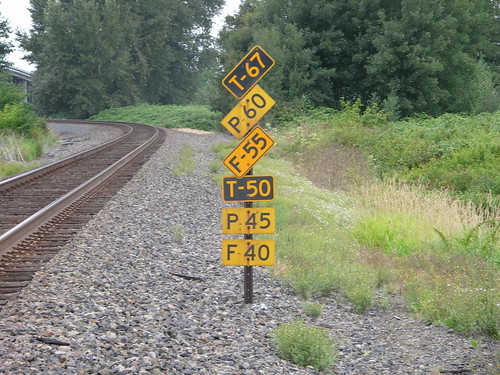This does not make sense to me. Is Sounder equipment not capable of 79MPH?
3rd Round Trip to Bellingham Begins Tomorrow

3rd Round Trip to Bellingham Begins Tomorrow
Neither do the Superliners but they still make it on schedule within a few minutes when used.Sounder equipment doesn't tilt.
I agree that attributing the longer run time to Sounder equipment doesn't make sense. That explanation has not been repeated elsewhere. Yes, Sounder equipment can achieve 79mph, and no, the time should not be affected by the lack of Talgos' tilt capabilities. I would guess that the schedule differential has more to do with the slots that are being used, the padding included in the schedule, and the station dwell times.This does not make sense to me. Is Sounder equipment not capable of 79MPH?
Because the extra train will use Sounder equipment, running time to Bellingham will be 2h 40m, 28 minutes longer than the 2h 12m that the Talgo sets achieve.

All Aboard Washington shared Tom Taylor's photo.
"Here is the new #515 in Mount Vernon, WA (MVW) station on the inaugural run SEA-BEL-SEA to assist with the loss of the I-5 bridge over Skagit River in Mt. Vernon. They borrowed Sounder equipment for the summer, until the bridge is rebuilt in September. The fifth car is a cab car, and it runs North in push mode."

Until the second Cascades train was extended to VAC, it overnighted in Bellingham. That was the practice for several years until the runI suspect that a major factor in setting the times had to do with getting the train set back to Seattle for overnight servicing. There are no servicing facilities in Bellingham.
They probably are, but it still takes a few days for the numbers to get sorted out.
Don't understand your post. The only place that the Talgo tilt ability is beneficial is on curves, regardless of where the curves are located.The only place the talgo tilit capabilities are use the most is between North Seattle and Everett, other then that it is mostly on the curves.

Mount Vernon says thank you!
Here is train #515, a temporary train helping to relieve traffic around the I-5 bridge collapse in Mt. Vernon, WA. #153 is towing Sounder cars which were lent for the service. We in Mt. Vernon appreciate the help.

what's the meaning of the slanted signs?
Looking north at curve 74 on the Bellingham Subdivision in Skagit County, Washington.
Approach is for curve 76.
The bridge over the track (old Highway 99) is due to be replaced soon. On my bucket list is to have it built so as the curve can be realigned and be a 79mph curve. (I can dream.)
Enter your email address to join: